Different Types of Tea and Where We Source It
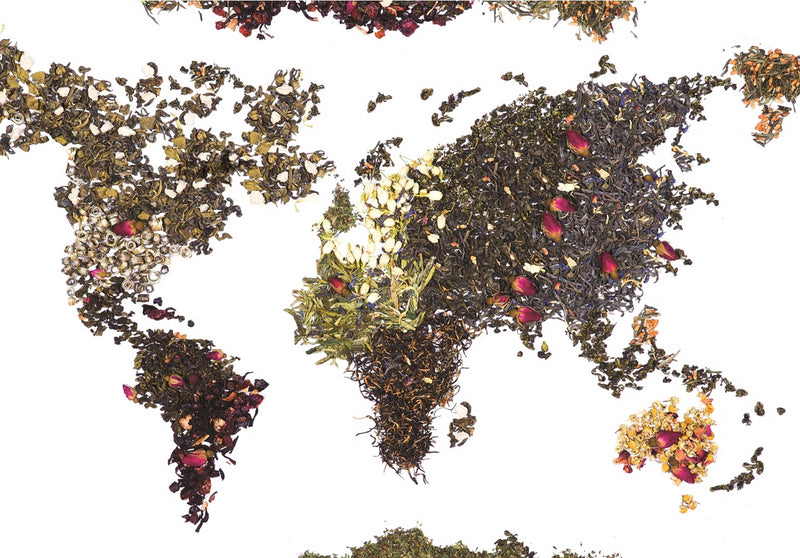

Different Types of Tea and Where We Source It
Tea was first discovered in China, in the mountains around Sichuan and Yunnan. According to earliest legend Emperor Shen Nung first tasted the drink when some unidentified leaves fell into his pot of hot water. Tea drinking became an elegant art form during the Tang Dynasty and overtime, this ritual spread across Asia, and later to Europe and America.
Asia is by far the biggest producer supplying 80-90% of all tea, mainly from India, China, Sri Lanka and Indonesia. China is the largest individual tea-producing country, growing more than 38% of the world’s tea. Tea was introduced to East Africa at the beginning of the 20th century and has become an important crop there, particularly in the highlands of Kenya.
Regions we source our tea
Our blends have been created using the finest ingredients from around the world with tea leaves that have been expertly grown, handpicked, and packed in small batches to provide a premium, fresh tea experience. We source different types of tea from different tea growing regions. China, Japan, India, Sri Lanka and South Africa are to name a few.
White Tea

We source all our white teas only from the traditional region of Fuding County, Fujian. Fuding is one of the main producing areas for white tea in China. It’s surrounded by highlands with spectacular rock formations, caves and towering mountains, including the famed Taimu mountain – known as ‘Paradise at sea’. The region is awash with rolling hills, fresh streams and forests. The hilly territories with their red and yellow soils and the year-round mild climate and consistent rainfall contribute to the unique flavour of the white tea produced here.
Shop our collection of White Teas
Green Tea

Our artisan range of green teas are sources from 3 distinctive tea growing regions. Sri Lanka, Japan & China.
Sri Lanka (Kandy Region) - The tea industry was born in Ceylon when James Taylor started a tea plantation in Loolecondera estate in Kandy in 1867. He was drawn to this medium grown region and it’s not hard to see why, the Kandyan Hills are spectacular - marked by a cool, calming atmosphere and heady fragrant breezes. It is one of Sri Lanka’s most flourishing tea growing regions, but it was also the last Kingdom of Sri Lanka. Known as the central province of Sri Lanka, the tea estates are dotted in the hills surrounding the low-lying valley of Kandy. The altitude is considered ‘mid-grown’, the estates are surrounded by mountains all around, which protects them from wind and helps produce a deeper-coloured, bright and fragrant tea.
Our green teas such as Honeydew Green, Strawberry Green & My Marrakech are directly sourced from Sri Lanka’s medium grown region.
Japan – Our Gyokuro Prestige, Genmaichai & Yuzu Kukicha green teas are sourced from the beautiful Shizuoka Prefecture in Japan. Known to be the largest tea producing region of Japan, Shizuoka is also one of the country’s most beautiful tea-growing areas, framed by the towering peak of Mt Fuji. The region is climatically perfect for tea cultivation, with fresh water, sun, heavy mists and nutrient-rich volcanic soil. There’s sun, extreme temperature fluctuations and heavy mists. This unusual terroir, produce a distinctive regional flavour.
The best senchas in Japan hail from the mountains of Kirishima in Kagoshima. Kagoshima is surrounded by volcanic landscapes and ocean, a beautiful and effective combination for tea cultivation. The endless sunshine and mild climate, along with the volcanic soil, combine to create the perfect conditions for sencha. Our Japanese sencha is made by Yutakamidori cultivar and the tea is processed and grown in a very particular way to ensure quality and avoid oxidization.
China – China is the largest green tea producing country and we source unique green tea blends from directly from origins.
Huangshan Mountain is one of China’s most famous and beautiful, and it’s also home to some of the best green teas in the country. Our Huangshan Mao Feng tea is sourced from this breathtaking region.
Longjing village is situated Hangzhou in China’s Zhejiang province – which has a moderate climate and high altitude, perfect to produce tea and our Longjin Tea hails from this region. The misty fields are nourished by low fogs and running streams. The leaves are picked and roasted on the same day, and the roasters use their bare hands to feel the heat and dryness of the leaves as they roast.
Hunan borders several other tea-producing provinces. The word ‘Hunan’ means south of the lake, because the renowned Dongting lake can be found just south of the border. Hunan’s subtropical climate is ideal for tea, the rich soil, and small variations in temperature through the day produce a very fragrant and beautiful green tea which is our popular Oriental Jasmine Green and Spring Green tea.
Shop our collection of Green Teas
Oolong Tea

We source our oolong teas from a few different regions of China.
Fujian Anxi, a county in the southern Fujian province, known to many as the Tea Capital of China. The tea plantations are in the lush mountains and hills, green and sprawling. As beautiful to look at as they are to harvest tea from. The soil is rich thanks to constant rainfall and a moderate sub-tropical climate and yields the high-quality tea that Anxi is famed for. The high altitude and cool climate produce sweeter leaves than the hotter lower-lying regions, and the mountainous terrain allows for excellent drainage.
Our oolong teas such as Milk Oolong, Jasmine Oolong, Tie Guan Yin, Ginseng Oolong, Oolong Rose, Kiwi Berry & Sweet Peach are sourced from this region.
Our Da Hong Pao tea is sourced from the scenic mountainous region of Wuyishan is home to Wuyi Oolong. Stretching along the northernmost border of the Jiangxi province, the mountains of Wuyi are home to 36 soaring peaks and the beautiful Nine Bend Creek – a river that undulates through the wild terrain. Tea sustains life here, there are tea gardens and teahouses dotted throughout the region, run by the Wuyi mountain people. Wuyishan has become an Ecological Preserve and is now protected from development – there are also laws in place to ensure tea production is environmentally sustainable. The abundance of native forest that flourishes here as a result, has created a beautiful habitat for birds and insects. This has encouraged the production of polyphenols in the tea, which generate a distinctive, rich flavour.
Shop our collection of Oolong teas
Black Tea

Black tea is mostly produced in the tea growing regions of China and India. And other popular black tea producing countries are Sri Lanka, Nepal, Vietnam & Kenya. We directly source our black teas from China, India & Sri Lanka.
Sri Lanka – Our black teas are produced in the Kandy & Ruhuna regions in Sri Lanka. Ruhuna’s low-grown long leaf, full-flavoured black tea combines beautifully with the rich and fragrant tea from medium-grown Kandy. The distinctive flavour and exceptional quality of the sweeping coastal Ruhuna leaves add a layer of distinctive complexity to the blend, while the protected, lush rolling hills of Kandy and its full-bodied plants bring richness to the tea.
Our most popular black teas such as English breakfast, Supreme Earl Grey, French Earl Grey, Malabar Chai, Royal Ceylon Breakfast, My Melbourne, South Melbourne Breakfast & Orange Pekoe are sourced from this region.
India – Our Assam tea & Darling Darjeeling tea are sourced from the popular tea growing regions of Assam and Darjeeling in India. Black teas grown in India are typically grown from the camellia sinensis var. assamica tea variety, and have a darker, richer, and more full-bodied character. Low altitude, rich soil conditions, sufficient rainfall and a distinctive climate help these regions to produce some of the finest whole leaf teas.
China - Black teas originating from China have rich history stretching back centuries. These teas tend to be slightly lighter and milder and are lovely when taken on their own without the addition of milk or sugar. We have 3 artisan single origin teas that we source from China. Keemun black, Lapsang Souchong and Yunnan Golden Tips.
Shop our collection of Black Teas
Pu Erh Tea

We source our Pu Erh teas from Menghai, a county in the Yunnan province of China. It’s tucked into the southernmost corner of the country and shares a border with Myanmar. Menghai’s mild sub-tropical climate and remoteness encourage rich biodiversity and foster the growth of high quality teas. Tea leaves are grown and harvested in counties along the Lancang river here – including ‘wild arbor’, the highly sought after large, soft, silver leaves found on plants that grow wild on the hillside. It’s believed that some of these trees are over 1000 years old.
Shop our collection of Pu Erh Teas
Herbal & Fruit Tea
We source our fresh herbs, flowers, and real fruit pieces from around the world. USA, Sri Lanka & Germany are to name a few. These chosen ingredients use a combination of skill, patience and experience in our picking and sorting methods providing a balanced experience for customers taste buds. Each of these ingredients are focused on promoting wellness in different ways through each tea’s unique combination.
Shop our collection of Herbal teas & Fruit teas.
Rooibos Tea

Indigenous to South Africa’s mountainous region of Cederberg, Rooibos is actually a herb that’s harvested, dried, and brewed into a fragrant herbal infusion. It grows amidst an incredibly bio-diverse World Heritage protected wildlife area, with dramatic 500-million-year-old sandstone formations and 6000-year-old rock art. An appropriately spectacular natural setting for this rich, flavourful and nourishing ‘bush tea’ to hail from. Smoky, sweet, woody, grassy, vanilla, floral, geranium, honey, herbal and caramel are just a handful of the words that can describe the flavor spectrum of sipping a rooibos tea.
Shop our collection of Rooibos Teas
More Readings
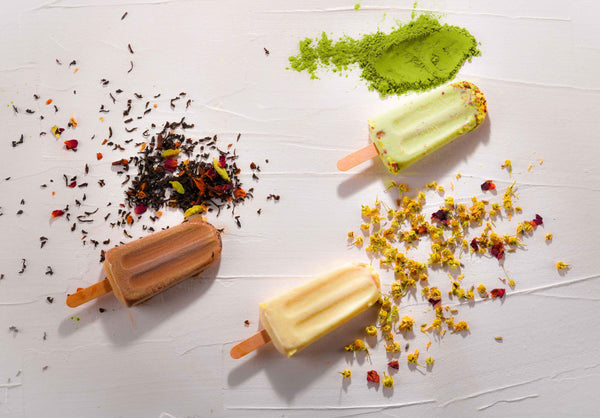
Tea Infused Ice Cream for Summer
Sugar, spice, and everything ice! Looking for a summer treat? These tea infu...
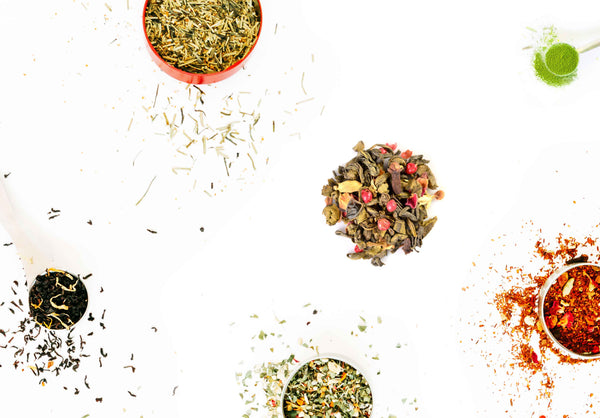
What Tea Should I Drink? Teas to suit different times of the day
Whilst we say 3pm time is tea time, often you find that certain teas, just li...
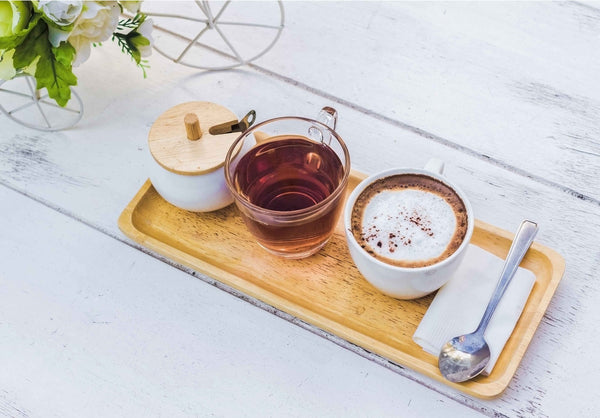
Tea vs Coffee: Which Drink Has Greater Health Benefits?
Coffee and tea are amongst the most consumed beverages in the world. People d...
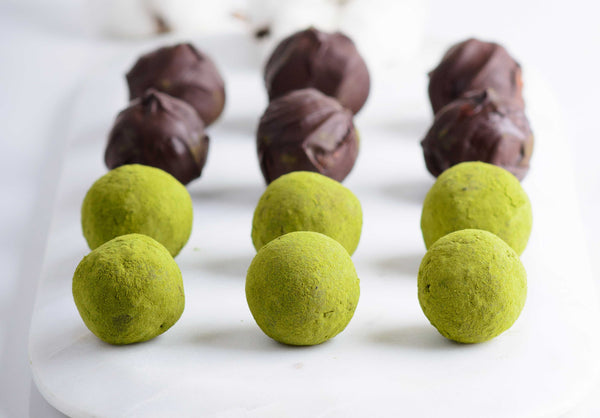
Matcha White Chocolate Truffles
We think its safe to say everyone loves a sweet bite of something after dinne...
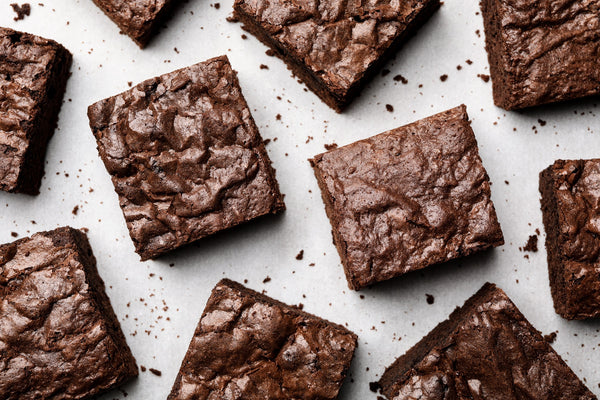
Peppermint Chocolate Brownies
If you love our Peppermint tea and chocolate. Here's a fantastic recipe for s...